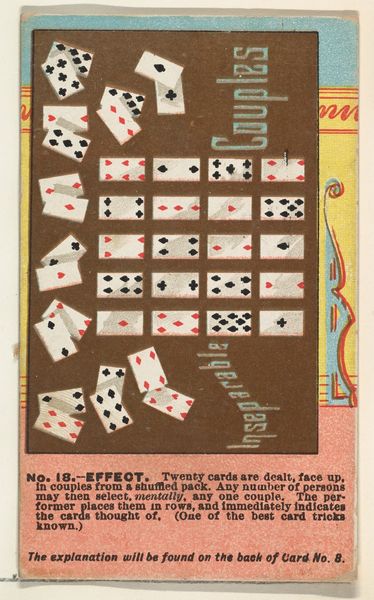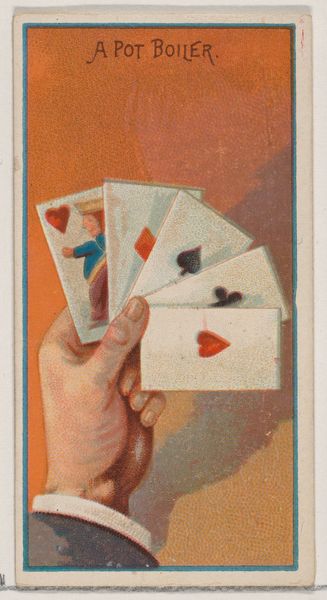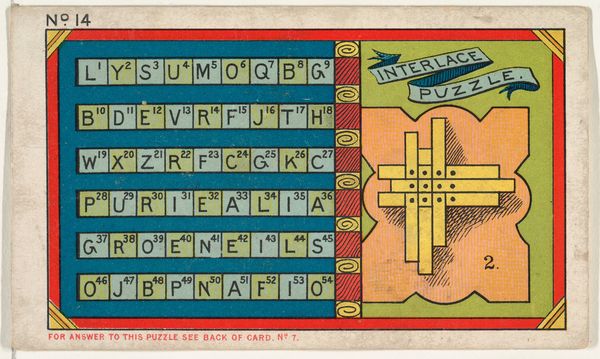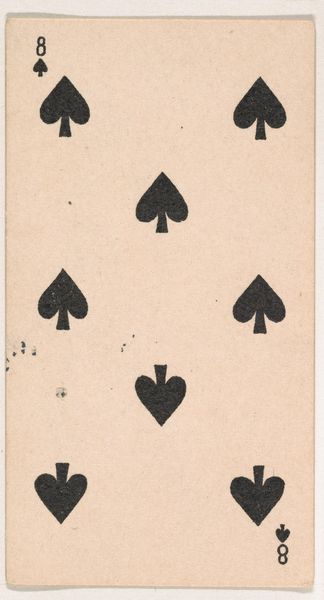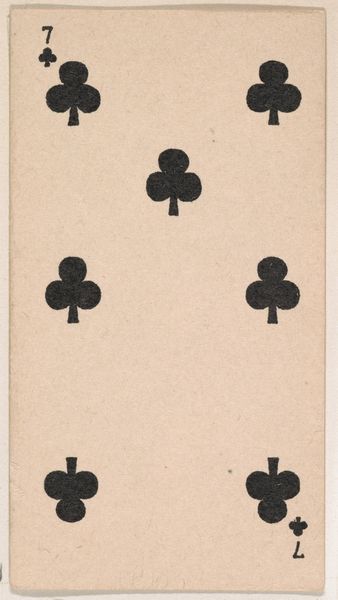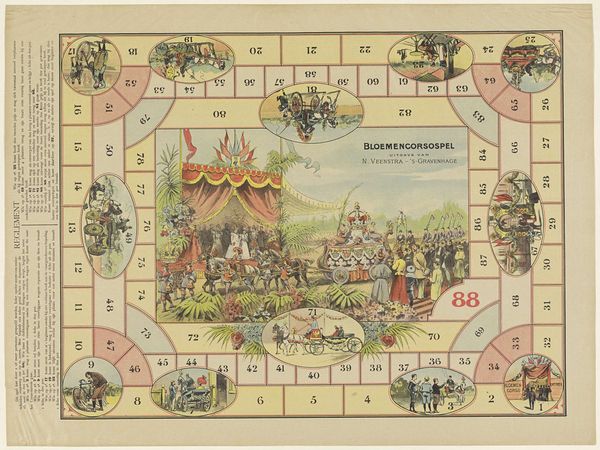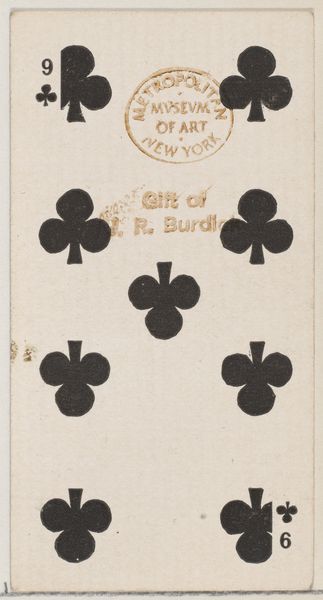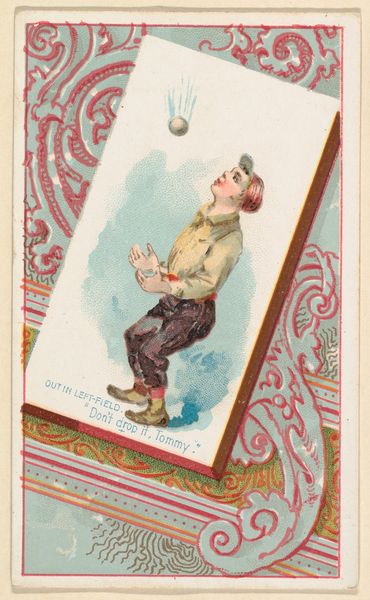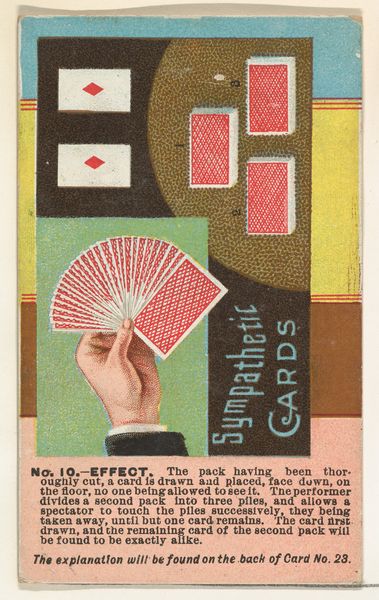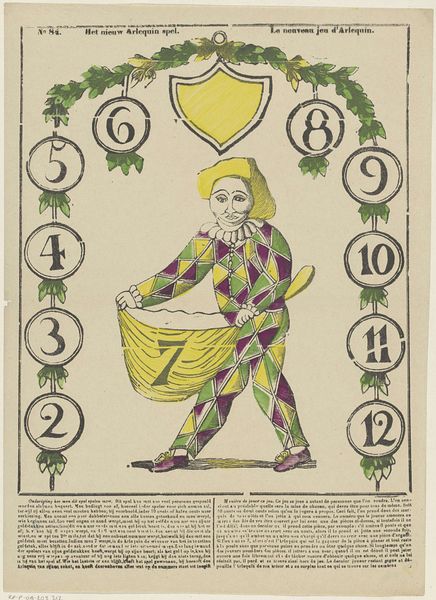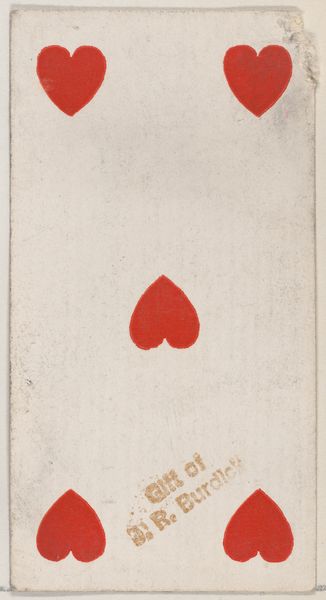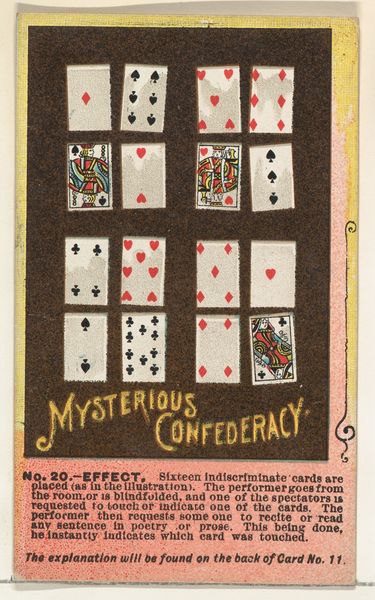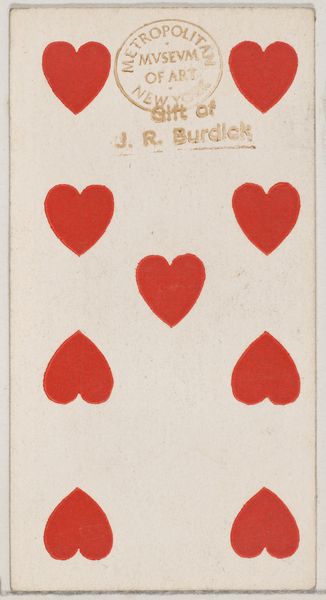
Puzzle Card Number 13, The Domino Trick Puzzle, from the Jokes series (N118) issued by Duke Sons & Co. to promote Honest Long Cut Tobacco 1887 - 1891
0:00
0:00
Dimensions: Sheet: 4 1/4 × 2 1/2 in. (10.8 × 6.3 cm)
Copyright: Public Domain
Editor: So, this piece is a puzzle card, “Puzzle Card Number 13, The Domino Trick Puzzle,” from the Jokes series. It was created by Duke Sons & Co. between 1887 and 1891 as an advertisement for Honest Long Cut Tobacco, it seems. The print is bright and catching. What jumps out at you? Curator: What fascinates me is the intentionality behind seemingly simple images. The dominoes themselves act as symbols of chance and strategy. But in the context of an advertisement, they also subtly suggest a ‘gamble’ with the tobacco product itself. Will you enjoy it? Will it be worth it? These puzzle cards tap into our inherent desire for problem-solving. What do the dominoes evoke in your mind, separate from the advert? Editor: I see the game first, and its pieces...a bit old fashioned perhaps. It feels disconnected from our touch-screen world! But why the Dominoes? Curator: Yes! The very materiality, print, cardboard, brings its original context to our eyes and minds today. As a game of strategy that's existed for centuries, it carries the weight of human interaction and tradition, subtly hinting at trust and tradition—qualities they hope will transfer to the brand itself. And beyond that initial draw, offering a solution on the back creates repeated exposure. How interesting to embed commerce into leisure so cleverly! This blend blurs the lines of entertainment, persuasion, and commerce... Editor: Ah, I hadn’t considered that. So it’s not just about the visual; it’s about creating engagement and memory…a puzzle leading to product loyalty? Curator: Exactly. Visual and conceptual memory! An icon functions like that, too...it embeds within our memory, changing how we think, feel, act. Images move, change meaning, across culture and history. A "joke" then might not be so trivial, no? Editor: True! I’ll definitely look at advertisements differently now. Thanks for pointing out those symbolic connections.
Comments
No comments
Be the first to comment and join the conversation on the ultimate creative platform.
